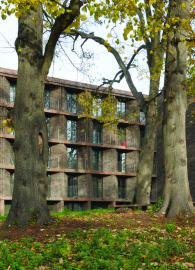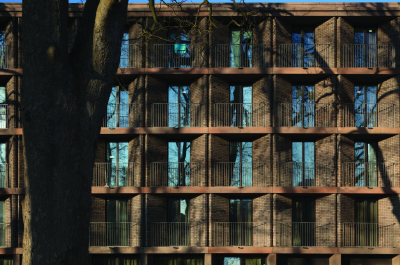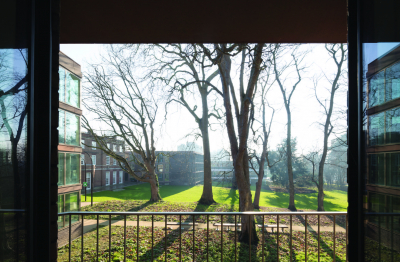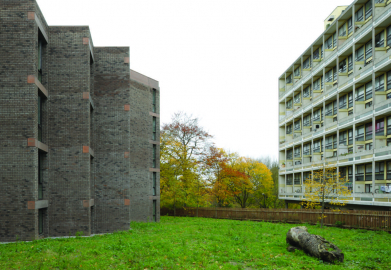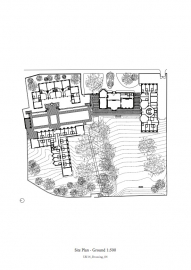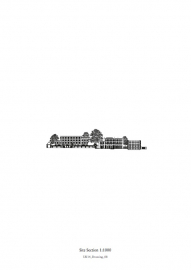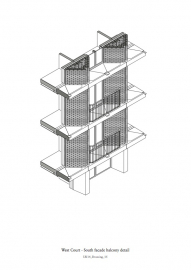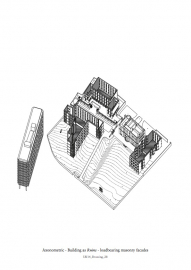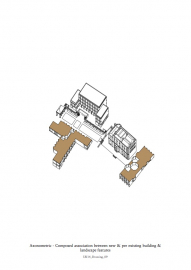Chadwick Hall
3 buildings are situated in the grounds of a Georgian villa, adjacent to a Post-war housing estate, both of which are historic monuments & form part of a wider parkland setting. The masterplan derives its logic from the landscape establishing a convivial plan for a student community. The project is concerned with history, social purpose & the way we build.
Commissioned by the University of Roehampton, Chadwick Hall is located in a west London suburb. The 6,365m2 scheme accommodates 19 apartments, 6 townhouses & 2 studio flats - townhouses in North Court and apartments in West and South Court, 210 ensuite study bedrooms in all.
There are two significant layers of social and architectural history which create the context for the work: the nearby C18th brickwork & masonry villas designed by Archer, Chambers and Wyatt; and, 200 years later, Howell Killick, Partridge & Amis’ - when at London County Council - Brutalist insitu and precast concrete Alton West Estate which recast these villas as follies, and co-opted the C18th parkland, Downshire Field, as a setting for social housing and a foil to the Brave New World. The new architecture responds both with type and construction, and to the existing morphology of the garden.
The project had to respond to the setting of 1770 villa, 1911 summerhouse and garden, and sculptor Lynn Chadwick’s The Watchers (1960), all classified historic monuments; to a significant number of mature trees, and building proximities immediately beyond the site boundary. Given the sensitivity of the site, planning policy didn’t envisage any new building.
We had to demonstrate that a design could contend with these proximities, preserve the villa and reinterpret the setting. In our dialogue with planners, preservation societies, and Historic England we explained the work as the third evolution of this landscape.
The masterplan takes pre-existing landscape features and uses these to compose associations between buildings. South Court replaces the lost wing of the villa. North and West Court are paired around the garden and summerhouse. Together they form, an intentional community, the foundation for University life.
The University’s programme sought to maximise capacity, which we had to do in the most sensitive manner. The budget was low and construction contract “Design & Build”. The design had to employ an economy of means and demonstrate real efficiencies.
The design emulates the Georgian loadbearing brickwork and Modern concrete frame construction. It encases a “warm” concrete frame inside “cold” loadbearing brick and precast trabeated walls. Interiors are wrapped in heavy “ruins” that create the space for balconies. The ruins play down the performative aspects of the walls and instead heighten the perceptual dimension of experience.
Arrowhead loadbearing brick piers shape and bear the weight of half-hexagonal balconies, avoiding the need for support bracketry. The tips of the arrowhead piers are further articulated so their cheeks appear to open to the garden. The balconies are tied together and in turn tied back to the in-situ concrete frame for stability.
Doors are oak, French windows and gargoyles aluminium, metalwork powdercoated mild steel.
The sustainability strategy focused on high levels of thermal insulation, air tightness and generous daylighting and natural ventilation to minimise energy usage. Façade materials are robust, built to last, minimising maintenance & replacement. A Combined Heat & Power system serves district heating.
The 6,365m2 scheme was built for £1,980/m2, total £12.6 million.


